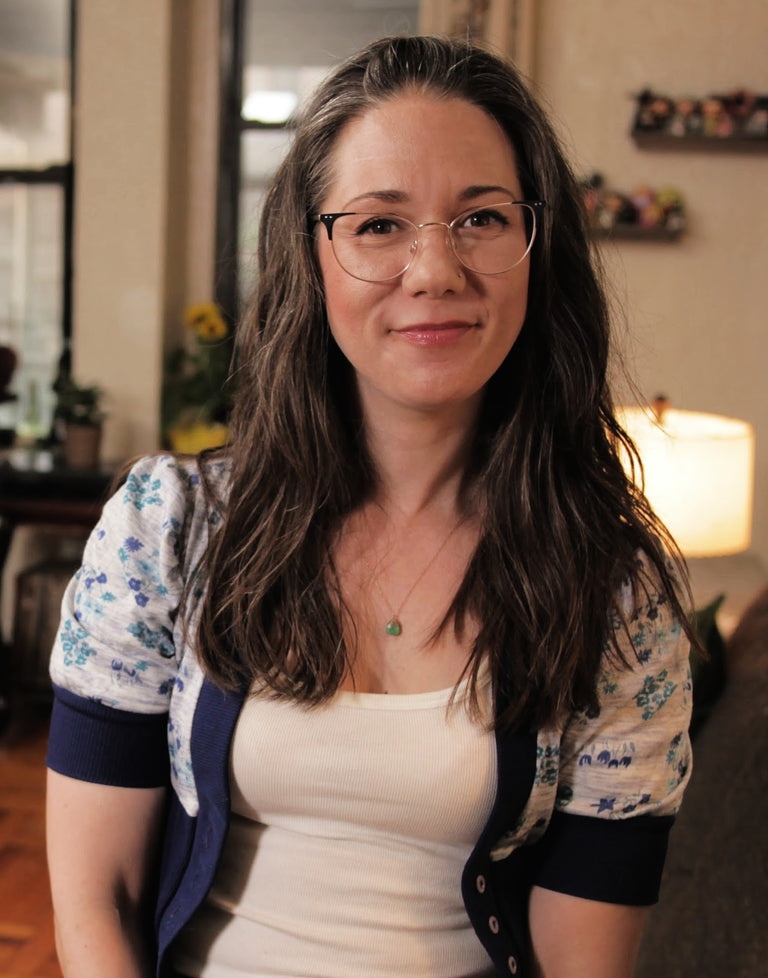First, it might be an annoying stray or two clinging to your sweater. Then it’s a few strands on your pillow in the morning. Wait, does that clump of hair in the shower drain look bigger than usual?
Hair shedding is normal, but when does it cross the line into problematic? Keep reading to understand hair shedding, some common causes of excessive shedding, and what you can do to encourage fuller-looking, healthier hair.
The Hair Growth Cycle
To get your head around hair shedding, it’s important to know the basics of hair growth. Each one of your hairs goes through the hair growth cycle, which includes the following four phases:
- Anagen phase is a phase of active hair growth, when your hair strands grow longer. Your scalp hair can be in this growth phase, which can last anywhere from two to six years, on average.
- Catagen phase is when the hair follicle gears down and stops active growth; this phase can last a few days to a few months.
- Telogen phase is when the follicle rests and the hair shaft hangs out without growing further; this phase typically lasts about three months.
- Exogen phase is the final stage when the hair shaft is shed; this phase only lasts a few days.
These are normal phases that all hairs go through, giving your follicles a chance to do their growth thing, rest and begin a new cycle. However, the hair growth cycle is complex and can be impacted by various factors that can lead to increased hair shedding and even hair loss.
Hair Shedding vs. Hair Loss
Although hair shedding is a normal part of the hair growth cycle, excessive hair shedding or hair loss is not. Here's more about hair shedding versus hair loss.
Excessive Shedding and Telogen Effluvium
Several different things could cause excessive shedding, but the most common cause is a temporary hair loss condition called telogen effluvium. With TE, a sudden and impactful stressor on the body causes a drastic shift in the growth cycle, moving a disproportionate number of follicles out of active growth (anagen phase) and into resting (telogen phase).
As mentioned, the telogen phase usually lasts about three months. This means that with TE, there is a delay between the inciting incident and the noticeable increase in hair shedding. In other words, the shedding doesn’t happen during the stressful event. “This is what makes it challenging for people to connect the dots from excess stress to shedding,” explained Dr. Erum Ilyas, board-certified dermatologist and founder of AmberNoon.
So what can trigger an episode of telogen effluvium? Dr. Enrizza P. Factor, a board-certified dermatologist, offered the following common examples:
- Dramatic weight loss
- Hormonal changes caused by childbirth.
- High levels of emotional stress, such as caring for a loved one who is sick, going through a divorce or losing a job.
- High fever
- Surgery
- Recovering from an illness, especially if it included high fever.
- Hormonal imbalance caused by changes to birth control.
Telogen effluvium is your body’s way of coping with an extreme change or stressful situation. Because hair isn’t vital, the body temporarily deflects resources away from hair growth. It's a form of diffuse alopecia, meaning hair will thin all over the scalp. “It’s also possible to go in and out of telogen effluvium with repeated bouts of stress, hormone changes and so on,” said Dr. Cynthia Bailey, board-certified dermatologist and founder of Dr. Bailey Skincare.
In recent years, cases of TE have been on the rise. Dr. Alex Spinoso, medical doctor and founder of Genesis Lifestyle Medicine, has seen a noticeable increase in what he calls “COVID hair loss” at his practice, and researchers are starting to examine the relationship between COVID and telogen effluvium more closely.
The good news is that TE is usually temporary. “The excess shedding actually signals that your body has recovered and is making new hair,” said Dr. Bailey. “Old hairs are shed as new hairs grow out from the base of the follicles.”
Hair Loss
Hair shedding and hair loss may sound like the same thing, and we often use the terms interchangeably. However, medically speaking, they are different. In contrast to shedding, hair loss occurs when the hair follicle does not or cannot grow a new shaft of hair. With excessive hair shedding, there is a change to the hair cycle. With hair loss, there is a pause or a full stop of the cycle.
Hair loss in women and men can happen suddenly or gradually over time, depending on the underlying cause. For example, alopecia areata is a common autoimmune hair loss condition that presents as small round patchy hair loss. This hair loss can happen rather quickly. The bald spots might not grow hair back, or they might go through recurring cycles of growth and loss.
Another form of sudden hair loss called anagen effluvium happens when the hair follicle sheds its shaft during the active phase of growth. Anagen effluvium is often caused by chemotherapy treatments or other medications, but it can also be triggered by illness. Losing hair with anagen effluvium is sudden and extensive (if not total), and often persists until the medication is stopped or the underlying condition is treated.
Other forms of hair loss, like androgenetic alopecia (also known as male/female pattern hair loss or male/female pattern alopecia), traction alopecia, or central centrifugal cicatricial alopecia develop more slowly, with gradual thinning over time that eventually results in hair loss.
“There is a gradual miniaturization of the hair shaft where it thins in diameter gradually while shortening the cycle of growth so that the length of the hair is gradually diminishing as well,” explained Dr. Ilyas. “This is so gradual that it is not noticed as hair loss or shedding initially. It’s more noticeable as a qualitative change in hair, where [the shafts] become finer, wispier and more difficult to manage. [Hair loss] patients rarely comment on seeing the hair actually come out.”
Hair loss can have a variety of underlying causes, for example, genetics (as with androgenetic alopecia), repeated stress on the follicles (traction alopecia), autoimmune conditions (like Hashimoto’s disease or lupus) and even nutritional deficiencies can cause hair thinning or eventual hair loss.
Related: Hair Shedding vs. Hair Loss— What's the Difference?
How Shedding Much Is Too Much?
The human scalp has about 80,000 to 120,000 hair follicles, and each moves through the four phases of the growth cycle independently. At any given time, about 80-90% of these follicles are in the active growth stage.
“Normal shedding” varies from person to person, but on average, folks lose about 100-200 hairs per day. To get a rough idea of what average hair loss looks like, depending on hair length, refer to this guide.
Normal shedding can also vary by season, and while more research is needed, there is some evidence that hair shedding can increase during the summer and fall. But ultimately, when it comes to knowing how much shedding is too much, Dr. Ilyas encourages people to trust their gut.
“The best answer to how much shedding is too much is likely whatever you notice as outside of what you are used to, and this varies widely,” she said. “I prefer the gauge of personal perspective because I worry that focusing on numbers makes patients feel that their concerns have been dismissed without recognizing that there is a discernible change in their experience.”
If you notice hair falling out more than usual — more stray hairs on your clothes or around the house, your ponytail feels thinner or your scalp is showing through more than it used to — it’s time to seek out help from an expert.
Related: How Much Shedding Is Normal?
When to See a Doctor
As Dr. Ilyas pointed out, if you notice a change in your hair’s density or you see excessive hair shedding, regardless of how many hairs are actually falling out on any given day, it’s wise to consult with a doctor.
Early treatment is valuable, and it’s always best to diagnose and treat the underlying causes of hair loss sooner rather than later. Your primary care doctor or a dermatologist can discuss your hair thinning with you, examine your scalp, assess hair loss and order blood tests to get the full picture as to what might be impacting your hair.
Holistic Hair Care For Shedding
If you’re dealing with excessive hair shedding, there are a number of things you can do. By supporting your general health and well-being, along with a few tweaks to your hair care routine, you can support your hair follicles and promote healthy growth cycles.
Be Gentle
Think about being as gentle to your scalp and follicles as you can. Avoid tight hairstyles and heat styling whenever possible, along with chemical treatments and harsh chemical treatments or intense brushing and combing. Check the ingredients list on your favorite shampoo to make sure it won’t mess with the wellness of your follicles and consider VEGAMOUR’s all-natural, clean and vegan alternative. Our GRO Revitalizing Shampoos and Conditioners are designed to be gentle and promote thicker, fuller-looking hair.
Eat Well
A healthy diet filled with healthy fats, whole grains, protein and a variety of fruits and veggies is the best way to give your follicles all they need to build beautiful shafts of hair. If you feel like you need a little boost every now and again, consider a daily hair-friendly supplement.
Level Up Your Hair Care Routine
Did you know that scalp massage might help improve blood flow to your scalp? Initial research has shown that scalp massage might improve hair growth and density — plus, it just feels really good! It’s also a great way to enhance the application of our GRO Hair Serum, which:
- Reduces signs of shedding by up to 85%*
- Increases the appearance of hair density by up to 56%*
*Based on a 120-day independent, third-party clinical study with 40 participants using GRO Hair Serum once daily.
The Takeaway
Hair shedding is a natural part of the hair growth cycle, but things like genetics, stress, health conditions and medications can all impact this cycle, sometimes leading to excessive shedding or hair loss. On average, people lose hair at a rate of about 100-200 strands per day, but when it comes to knowing how much shedding is too much, trust your experience. If you’re noticing more shedding than usual or thinning hair and you’re concerned, talk to your doctor or a dermatologist who can assess your hair and scalp health.
#include-related-slider#
More From VEGAMOUR
- Shop: Our Bestselling GRO Hair Serum
- Why Millions Choose GRO Hair Serum
- How to Do a Messy Bun With Thin Hair
- What Happens If You Don't Wash Your Hair?
Photo credit: miljko/iStock



















